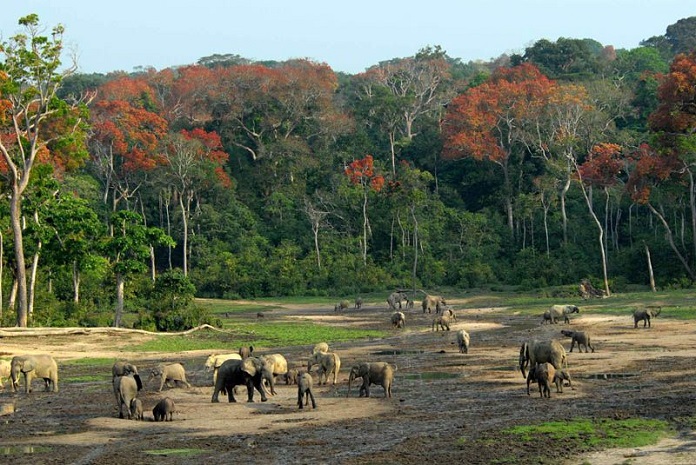Africa as a whole is the second largest and most populous continent in the world just after Asia. The continent has regions to the West, North, East, South, and Central. Central Africa is one of the sub-regions of the African continent comprising various countries. However, it is known that Central Africa is primarily inhabited by Bantu people after their migration to the region and the Bantu language is predominant in this region.
Besides the Bantu people, the region also has as its inhabitants the Mongo, Kongo, and Luba people, Zande, Nilo-Saharan and Niger-Congo Ubangian communities, Gbaya, and Banda. More so, countries in Central Africa are known for having landmarks which are very spectacular and they have been a center of attraction for people far and near.
Countries You Will Find In The Central African Region
Central African people are predominantly Christians and practitioners of traditional faiths, although Islam is also practiced in some areas in Chad and the Central African Republic.
1. Angola
2. Cameroon
3. The Central African Republic
4. Chad
5. The Democratic Republic of the Congo
6. The Republic of the Congo
7. Equatorial Guinea
8. Gabon
9. São Tomé and Príncipe
The Central African Countries and their Important Landmarks
Central Africa is notable for being home to supra-regional organizations like the Lake Chad Basin Commission and the Economic Community of African States. Aside from these, each of the countries in the region is notable for its unique landmarks.
1. Angola
Capital: Luanda
People: Angola is the 7th largest country in Africa with a population estimated at 31,127,674 as of 2020. It has more than 2000 ethnic groups and the predominant ethnic groups are Ovimbundu, Ambundu, and Bakongo.
Religion: The majority of its people are Christians (Roman Catholics).
Language: Their official language is Portuguese which is a reflection of the country’s colonizers.
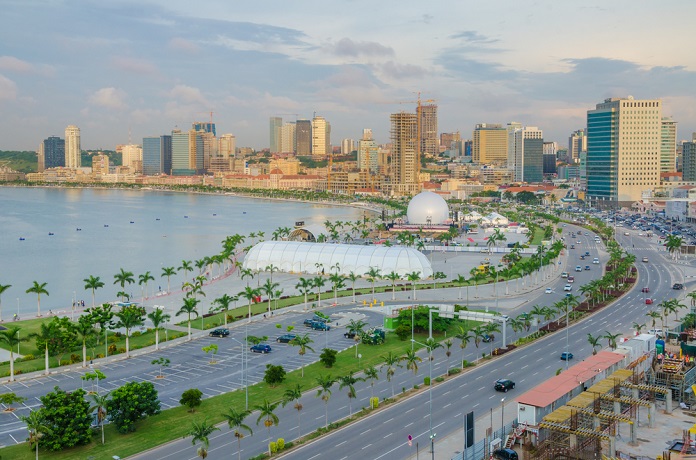
Angola’s Famous Landmarks
Christ the King Statue
This is a statue of Christ overlooking the city, like Rio de Janeiro. It was built in 1957 out of marble and is one of the most important monuments in Angola. Cristo Rei Statue is 30 meters high and it is located at Lubango in the Southern part of Angola.
Cangalongue Cave
It is a small cave with deposits that have piqued the interest of a lot of scientists as important scraps of Pliocene – Pleistocene primates have been found there. The first time these caves’ existence became known was back in 1933 and it can be found in Huila Province.
The National Museum of Slavery
This is located in Morro da Cruz, a small locality of Luanda. In 1977, the National Institute of Cultural Patrimony created the National Museum of Slavery. Their major aim was to depict the history of slavery in Angola. The Museum is next to the Capela da Casa Grande, where the slaves were baptized before they were shipped off to other destinations. The museum features several cultural and historical interest that were used in the slave trade.
The Fortress of Muxima
It was built in 1599 and has remained one of the most visited monuments in Angola to date. It is located in the Muxima district along the Kwanza River in Bengo province of Angola. The fortress played a major role in the expansion of Angolan territory by the Portuguese and it was once used as a prison. Asides from assuring the colonialists’ protection against any uprisings or revolts, the fortress also provided them with access to the interior of Angola’s territory. The Fortress of Muxima was officially declared a national monument in January 1924.
Other popular tourist sites and landmarks in Angola include:
- Pediva Hot Springs
- Miradouro da Lua, Luanda
- Malandula Falls, Malanje
- Mausoleum of Agostinho Neto, Luanda
2. Cameroon
Capital: Yaoundé
People: Cameroon is home to over 250 native languages spoken by close to 25 million people. The country is often referred to as “Africa in miniature” for its geological and cultural diversity.
Language: Due to the fact that Cameroon was colonized by both France and the United Kingdom, it has 2 official languages: French and English.
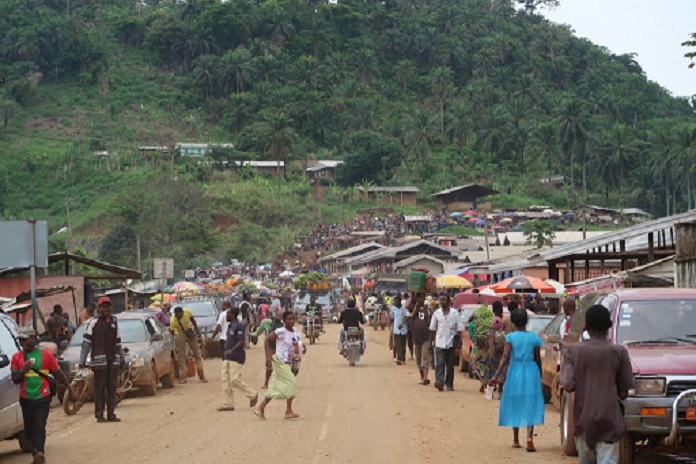
Notable landmarks in Cameroon Include:
Mount Cameroon
This landmark is located close to the Buea region in Cameroon and it is the highest point in sub-Saharan western and central Africa. It peaks at almost 4,100 meters (13,500 ft). It is the 4th-most prominent peak in Africa, and also the thirty-first most prominent in the world. It is home to the annual Mount Cameroon Race of Hope.
Ekom-Nkam Falls
These all-natural twin waterfalls are located in the jungles of Nkongsamba. They are well over 80 meters (262 feet) high. Moreover, Tarzan made this place home in the 1984 movie titled Greystoke.
Bimbia Slave Port
This is an archaeological site with lots of ruins. According to history, slaves walked through the Door of No Return once they were sold in Bimbia. The ruins of their prisons and the iron shackles they were bound in can still be seen at this place.
Waza National Park
This Forest was founded in 1934 as a hunting reserve. It has now become a UNESCO Biosphere Reserve. The park provides protection for elephants, hyenas, gazelles, cheetahs, lions, and several other animals.
Bafut Palace
The home of the Bafut royal family is a popular tourist center in Cameroon. This palace has been the home of the annual Abin festival since 1516. The Achum shrine located at the palace has been called the of spiritual core of the village.
La Nouvelle Liberté
This iconic statue by Douala has braved controversy to become the symbol of the city. It is made out of scrap metal and junk and is mounted at Rond Point Deido. Amongst other things, the statue represents the people’s will to reinvent themselves.
Lake Nyos
This natural feature which is located in the Northest region of Cameroon is equipped with degassing tubes to prevent the reoccurrence of the limnic eruption that killed over 1,700 people and 3,500 livestock in 1986. Only 3 of this type of lake exists in the world.
Benoue National Park
This park is a UNESCO-designated reserve along the River Benoue in Northern Cameroon. It has more than 300 bird species, lions, and the endangered black rhinoceros
Other notable landmarks in Cameroon include:
- Sabga Hill
- Limbe Botanic Gardens
- Mandara Mountains
- Foumban Palace
- Limbe Wildlife Center
3. The Central African Republic
Capital: Bangui
People: It has an estimated population of around 4.7 million as of 2018
Language: The Central African Republic has its official languages as French and Sango.
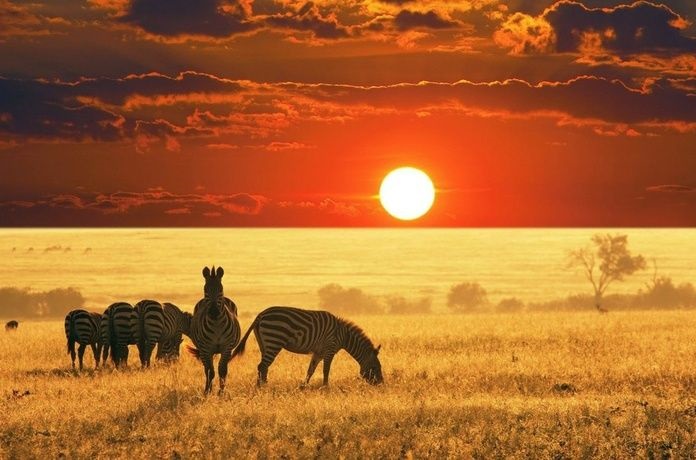
The Central African Republic is landlocked between several other war-torn countries in addition to facing its own internal problems with poachers, general lawlessness, and military violence. The Central Africa Republic has been a scene of civil war that has been ongoing since 2012, notwithstanding that fact, the country still has some spectacular places worth seeing.
Some major landmarks in the country include the following:
Chutes de Boali
The small town of Boali in The Central African Republic is mostly visited for the popular Boali Falls. The waterfalls are upstream from the town and are possibly the best-known landmark in the Central African Republic. The waterfalls which tumble 50m (164ft) is one of the natural beauties in the Central African Republic and a major tourist attraction. Even though it is no more than a trickle during the dry season when it consists of several small and separate falls, they take a dramatic turn during the rainy season, coming together to form a powerful and impressive fall.
Manovo-Gounda St Floris National Park
This park is one of the finest places in the country to view wildlife and is located on the border between the Central African Republic and Chad. The very large park covers a huge area estimated at around 1.75 million hectares and it is home to many species of animals including the very rare black rhino. Other species found within the park are elephants, wild dogs, leopards, and cheetahs.
Bouar Megaliths
Bouar is an incredible landmark in this country. There are a large number of stone megaliths known locally as Tajuna just outside of the town. These stones are believed to be burial ground markings and some are up to 5 meters tall. The stones date back to the neolithic ages, which makes them as old as Stonehenge in Great Britain. The site was included on the tentative list of UNSECO World Heritage Site on April 11th, 2006.
Chinko Nature Reserve
The Chinko Nature Reserve is based on the Chinko Drainage Basin. The reserve is home to several species and has been credited as one of the most biologically diverse places on earth. Despite all this, the reserve is currently under threat from Ivory poachers and armed herdsmen. This herdsman kills any and all predators to protect their herd during their crossing through the area.
Other important tourist sites in the Central African Republic include:
- Dzanga-Ndoki National Park
- Andre Felix National Park
- Boganda Museum
- Bamingui-Bangoran National Park
- Kembe Water Falls
4. Chad
Capital: N’Djamena
People: Chad is home to more than 200 different ethnic and linguistic groups with a population estimated at 16,877,357 as of 2020.
Language: The country has 2 official languages; Modern Standard Arabic and French.
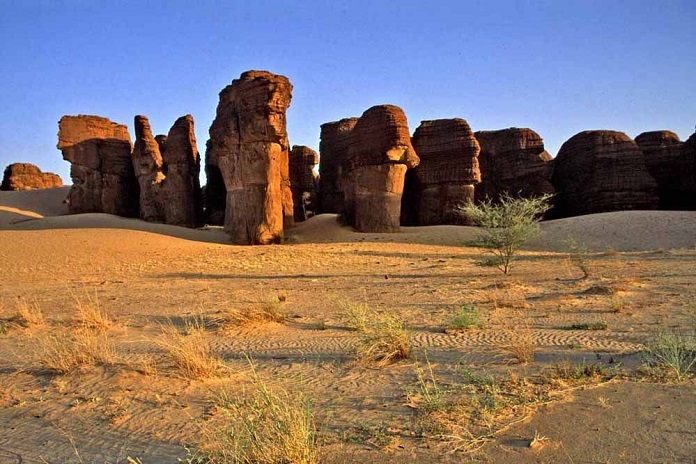
Chad is another landlocked country in Central Africa and it became a colony in a 1913 dominion by France before gaining independence in 1960. Unfortunately, the country is one of the most corrupt and poorest countries in the world with most of its inhabitants living in poverty as subsistence farmers and herders. However, there are so many monuments and landmarks in Chad that are worth visiting.
Here are some of the major landmarks that can be found in Chad:
Aloba Arch
This is definitely one of the most impressive natural arches in the world. The Arch is 77 m wide and some 120 m tall. It is located in the Ennedi region of Chad and it serves as a major tourist attraction place.
Dentelles Arches
They are a group of intricate natural arches and hoodoos, which form a unique landscape. They are located in Ennedi and they have also drawn a lot of o attention to Chad.
Five Arch Rock
This is a giant rock with five arches. The largest arch has a span of 20.4 m and a height – 13.7 m, impressive right? This magnificent sight is also found in the Ennedi region in Chad.
Soborom geothermal field and Yerike hot spring
Located in Tibesti at about 5 km north-west from the crater rim of Tarso Voon. This is a large geothermal field with fumaroles, mud pots, boiling water, and some reports about geysers.
Guelta d’Archei
This is a notable oasis that can be found in Ennedi Plateau and it is really unique as it is up to 150 m deep. Present here is an isolated population of dwarf Nile crocodiles (Crocodylus niloticus) and other species. Asides from all this, Guelta is also adorned with prehistoric rock paintings.
Ounianga Lakes
This landmark is a unique phenomenon as it is a group of freshwater lakes in the middle of the desert which is found in the North-Eastern region of Chad. Relict flora and fauna have been preserved in lakes and around them.
Colored cliffs south from Bardaï
In the year 1989 Jean Verame (a French artist) colored several cliff formations in Tibesti in bright white, black, red, blue, and violet colors. With this unique coloration, these cliffs stand out from the common brown/ red colors of sandstone formations. They also create an eerie feel.
Other landmarks worth visiting in Chad:
- Ouara
- Zakouma National Park
- Tibesti Mountains
- Begon II
- Lake Chad
5. The Democratic Republic of the Congo
Capital: Kinshasa
People: This country ranks 3nd in population in Africa with a population of 102,561,403 inhabitants as of 2020.
Population Diversity: There are over 200 ethnic groups in this country with the Bantu people being the majority, other ethnic groups such as the Azande, Mangbetu, Kongo, Luba, and Mongo people make up about 45% of the population.
Religion: The predominant religion in the country is Christianity practiced by about 94% of the population – with traditional religion practiced by 2.5% and Islam by 1% of the populace.
Language: French is a common tongue amongst the people with indigenous languages such as the Lingala, Swahili, Tshiluba and Kikongo dialects also well spoken.
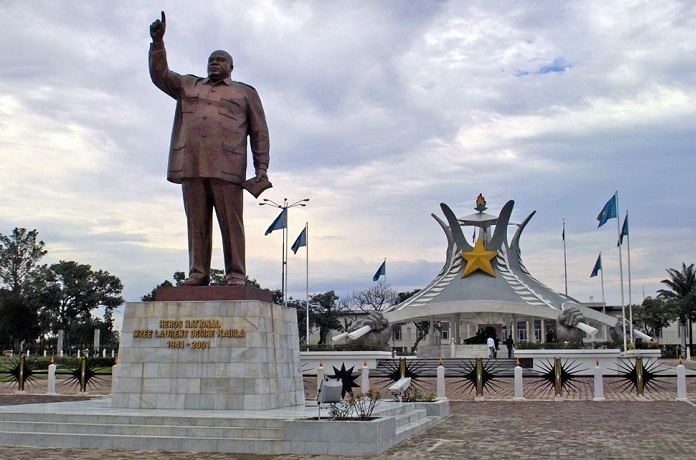
The other popular name for this country is Congo-Kinshasha or simply the DR Congo, and is the most populous Francophone speaking country in the world.
Congo has major landmarks that make it very unique some of which include:
Mount Nyamuragira
This sight is located at the north of Lake Kivu and it is reputed to be the most active volcano in Africa presently with an impressive height of 3,058 meters. Moreso, it is known for being the major source of Sulfur Dioxide pollution in the world, and its last eruption was in 2010.
Mount Nyiragongo
This is reputed for being one of the few volcanoes in the world that has a lava lake in it permanently. The lava depth is 600 meters and its highest peak stands at 3,470 meters. It can be found in the Virunga National Park at the western DR Congo, close to the border with Rwanda.
Boyoma Falls
This is made-up of 7 cataracts that are several meters high and about 1 kilometer wide each. The height of the fall is 61 meters , dropping over 100 kilometers, and the Congo River starts just at the bottom of the fall.
Inga Falls
This is reported to be the most impressive and largest rapids in the world, with a mind boggling flow rate of 42,000 cubic meters per second. The fall is 96 meters high and its course is 15 kilometers. It can be found in the Matadi region of the country close to the border with Angola.
Other top sights in DR Congo include:
- Lola Ya Bonobo Sanctuary
- Senkwekwe Gorilla Orphanage
- Zongo Falls
- Musée National de Kinshasa
Save - Inkisi Falls
6. The Republic of the Congo
Capital: Brazzaville
People: The country has a population of about 5,244,359 as of the 2018 population estimate.
Population Diversity: with the Kongo ethnic group making up about 41% of the population and followed by the Teke (17%) and M’Bochi (13%) ethnic group. The country also has a remarkable number of other African nationals and Europeans making up an impressive 24% of the population.
Religion: The country’s population is made up of predominantly 89% Christians- with a vast majority of them being Roman Catholics.
Language: The official language of the country is French
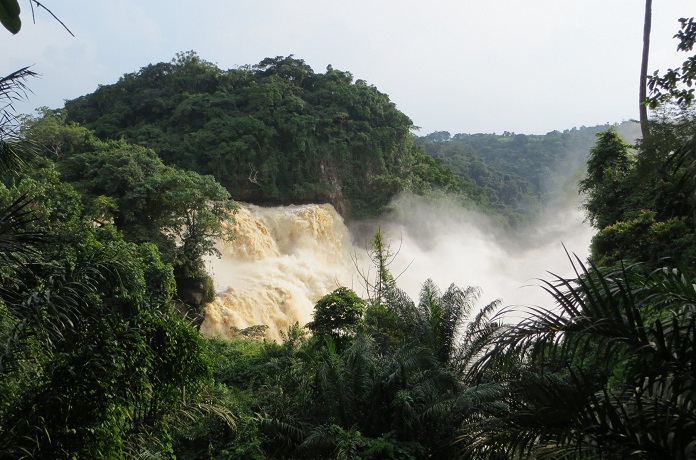
The country is notable as a tourist haven, as most African countries are, and is home to a number of natural landmarks such as:
Guoalougo Triangle
This lowland forest area is also known as The Last Eden due to the Virgin wildlife found in it which was discovered in the 1980s. It is actually believed that most of the primates and other lifeforms found therein have never encountered human being before.
Lake Tele
This is a freshwater lake located in the Epena District of the Republic of Congo. This lake is reported to have a gorilla population of about 120,000 in it, as well as giant reptiles named mokele-mbembe living in it, and there is also a vast array of very rare species of animals and plants are contained therein.
Loufoulakari Falls
This river is located near the mouth of the Loufoulakari River and its confluence with the Congo. This incredible waterfall is U-shaped and is 40 meters high, and it has several cascades along its stretch.
Other landmarks in the Republic of Congo include:
- Bela Falls
- Bonanza Falls
- La Côte Sauvage
- Musée Ma-Loango
- Brazza Memorial
7. Equatorial Guinea
Capital: Malabo
People: The country is projected to have a population of 1,454,789 as of 2020. About 87% of the population are Christians with a vast majority of them being Catholics. The major ethnic group in the country is the Fang, who make up 80% of the population.
Language: The official language spoken by a majority of the people is Spanish, with a few people speaking French and Portuguese.
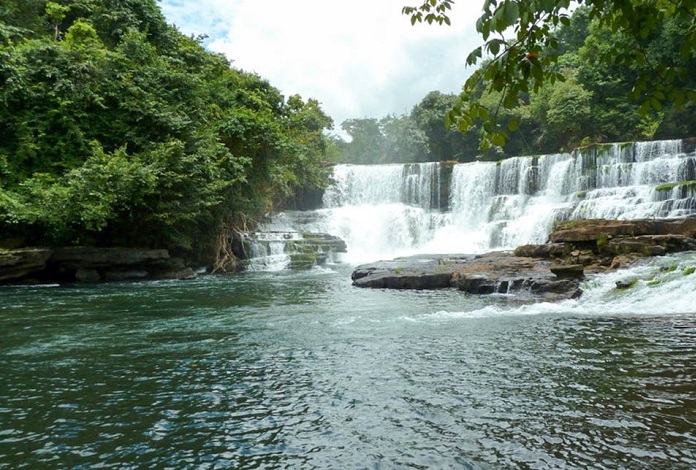
Equatorial Guinea is one unique country in the Central African region of Africa. The country is also notable for having spectacular landmarks that have attracted a lot of tourists over the years. Some of the notable landmarks in the country include:
Biben Falls
The fall is about 50 meters high and 60 meters wide with several cascades along its route and located on the Mbiti River.
Ilady Cascades
This is made up of a collection of falls that drop off a steep cliff at the Moka cater. The streams of the fall are very strong and are 250 meters high.
Luba Crater
This densely forested crater is 5 kilometers wide and is surrounded by a rim 1 kilometer tall. Very rare species of primates, other life-forms, and birds are believed to exist in this crater which is located on the island of Bioko.
Other remarkable places in Equitorial Guinea include:
- Monte Alen National Park
- Biokno Island Beaches
- Moca Valley
8. Gabon
Capital: Libreville
People: Gabon has a population estimated at 2.1 million people and the country is located along the Atlantic coast of Central Africa.
Languages: Gabon is a French-speaking country with about 80% of its population, speaking the language. In addition to this, the Fang native dialect is also very popular.
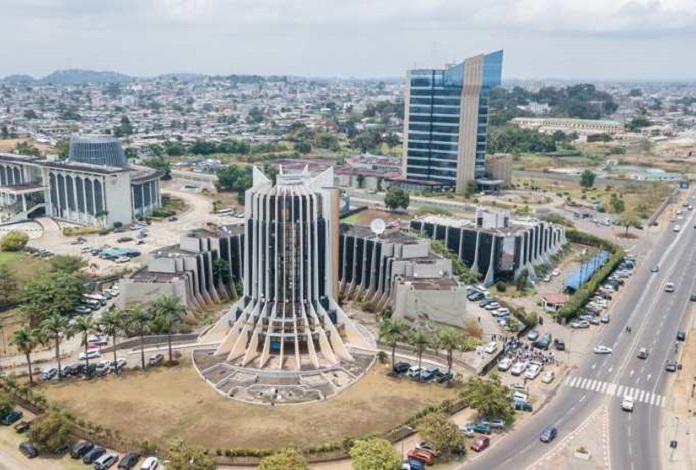
However, Gabon is still blessed with several natural wonders. From huge rain forests to mountains and countless waterfalls and several of them playing a significant role in shaping the history of the country. Here are some of the important landmarks and monuments that can be found in the country:
St. Michael Cathedral
The Cathedral of Saint Michael or L’Eglise St Michael is one of the most prominent landmarks in Libreville. This historical monument was built by the French Spiritan missionary Gerard Morel and Gabonese sculptor Zephyrin Lendongo. One of its best features is its ornately carved columns which were done by a blind local craftsman and were remarkably carved. The building was designed by Ledongo and Morel and each of the 31 wooden columns depicts a different Biblical scene.
Kaya-Kaya Rock Art
Somewhere inside the Ogooue Valley, the Kaya-Kaya Rock Art site is located on a small tributary known also as the Missitigui River. It was first discovered by Franceville, a mining company, during the course of uranium exploration in that area. The site has about 30 motifs, ranging from oblong blocks of sandstones, phallus-shaped rocks, and also vulva-like motifs engravement.
Lastourville Caves
The Lastourville Caves are located by caves and sinkholes in 4 limestone karst areas. Since ancient times, the caves have been used by people for settlement, burial rites, and traditional ceremonies. The area comprises six caves (the Ngoiringomo Cave, Grotte de Mbenalatembe, Paoun Cave, Kissidougou Cave, Grotte de Lebamba, and Lastourville Cave. Over time, the caves have developed in cretaceous limestone channels running in different directions and are also fossil karstic conduits.
Lopé-Okanda Reserve
Lopé-Okanda is definitely Gabon’s largest nature reserve and one of the best national parks in Africa. With its location right in the heart of the country near La Lopé. This reserve is inhabited by unique and beautiful species of wildlife and has an impressive array of forests and savannahs. Moreover, large mammals and stunning birdlife also add to this natural monument.
Leconi Canyons
From all indications, the Leconi Canyons are the most stunning and also most visited landmark in Gabon. Despite being located in the country’s most remote region, they continue to have a large number of visitors. The site features twin canyons with the smaller one being female and the larger one male. The rocks glow gold and red at sunset creating magnificent scenery for visitors. Moreover, locals claim some mysterious things happen in the canyons. According to them, those who enter never return because they believe that shadowy spirits live inside the canyons. It is considered one of the mysterious monuments in Gabon.
Oklo Mines
This is the only known site on Earth, where natural nuclear fission has ever taken place which was approximately 1.7 billion years ago in about sixteen closely located sites. Professional researchers have testified of this evidence through an unusual composition of uranium, neodymium, ruthenium, and other materials.
Other notable sites in Gabon include:
- Museum of Art and Culture
- Notre-dame de Lourdes
- Akanda National Park
- Ivindo National Park
- Fernan Vaz Lagoon
9. São Tomé and Príncipe
Capital: Sao Tome
People: With a population just above 200 thousand, the country is the second smallest African sovereign state with a fascinating history that has been dominated by the slave trade and its plantations. This has left several exciting and historical landmarks.
Language: The country’s official language is Portuguese
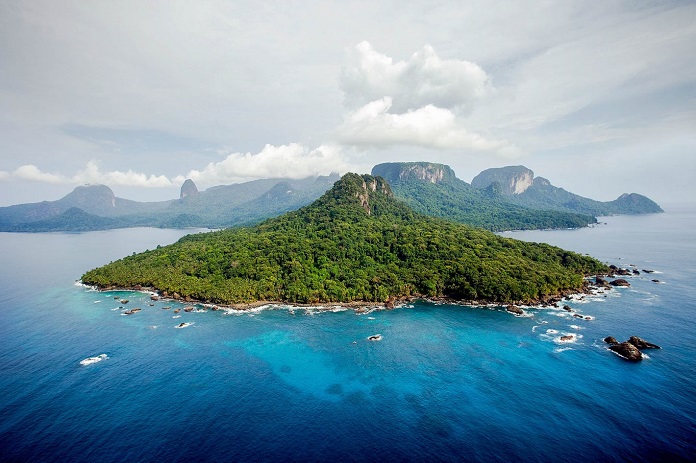
Since their peaceful independence in 1975, São Tomé and Príncipe have remained one of Africa’s most stable and democratic countries. This country also has some outstanding architectural landmarks and has been said to resemble a reserve of historical Portuguese colonial architecture.
Obo Natural Park
This park covers almost 30 percent of the island and has hundred species of orchids. It also has over 500 species of flowers of other kinds. It has animals like the tree frog, the newton frog, the grassland frog, the manatee to mention a few.
Sao Sebastiao Museum
It is a museum situated in the heart of the country and it is also a fort. Amongst other things, It is famous amongst history and art lovers because of the cultural and colonial-era artifacts in it.
Praia Micondo
The beach has been described as one of the best on planet earth. It is clean and has clear blue glistening water. The beach has been said to be mostly empty during the weekdays and one can actually relax and submerge in nature and its stunning views.
Agostinho Neto plantation
This is Sao Tomé’s administrative center of once rich Portuguese plantation. The Plantation was founded in 1865 and here in colonial style was built the whole town. The main palace is an enormous structure with three floors. There are several historical plantations on the island, including Água Izé, Monte Café, and others.
Sao Tomé Cathedral
This cathedral is large and old. From history, it is possible that its construction started in the late 15th century. The current structure was built or renovated in 1576 – 1578, it was then restored in 1814 and Its facade was altered in 1956.
Other landmarks in Sao and Tomé Principle include:
- São Nicolau Falls
- Lagoa Azul
- Olas Island
Which Central African Country Is The Largest In The Region?
I. Largest Landmass in the region:
The country has the largest landmass in the region with it situated on 2,344,858 square kilometers (905,355 square miles), with most of it being very arable lands suitable for agriculture and fishing.
II. Largest population in the region:
The population of inhabitants of the country as of the last national population projection made in July 2020 is 102,561,403. From these statistics, the Democratic Republic of the Congo is only bettered in size of the population by Nigeria (estimated to be 206 million as of 2020) in the whole African continent.
Which Country In Central Africa Attracts The Largest Number Of Tourists?
Depending on the type of attraction a tourist seeks, all the countries in Central Africa hold their own unique appeal and beauty. Nevertheless, according to a 2019 list compiled by CNN, out of about 30 most amazing places to visit in Africa, Nyiragongo Volcano located in Virunga National Park of the Democratic Republic of Congo makes number 23 on the list. This notable sight covers an area which is about 2 kilometers ( approximately 1.2 miles) and contains a lava lake. Nyiragongo Volcano has been described as one of Africa’s most active volcanoes, with its famous eruption in 2002 which displaced half a million people.
However, with regards to the number of tourists that visit the Central African region, DR Congo attracts about 350,000 people which is one of the largest destinations. It also puts it ahead of 107,000 tourists visiting the Central African Republic. This is not the same for other countries as it has been ascertained that Morroco, South Africa, and Egypt top the charts as they record a massive influx of tourists per annum.
